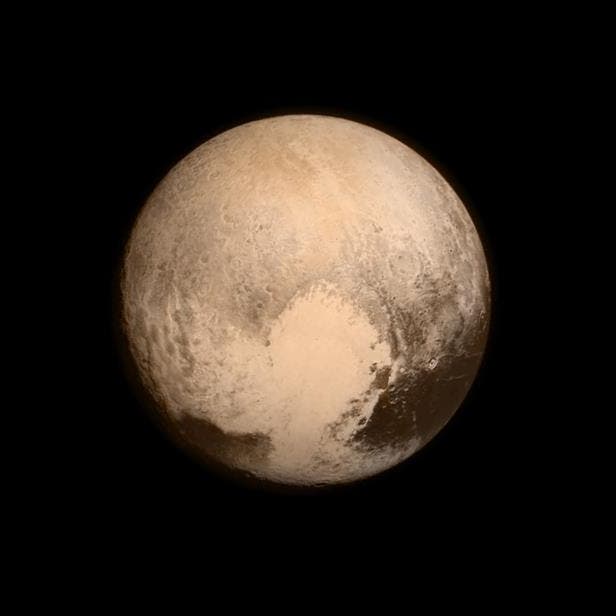
For some time, scientists have been intrigued by strange, regularly spaced ridges, that stuck out of Pluto’s cold, dark plains like thumbprints pressed into ice. Now, a new study suggests that these formations are actually dunes made out of methane “sand,” which is striking considering the dwarf planet’s extremely thin atmosphere.
“When we first saw the New Horizons images, we thought instantly that these were dunes but it was really surprising because we know there is not much of an atmosphere. However despite being 30 times further away from the sun as the Earth, it turns out Pluto still has Earth-like characteristics. We have been focusing on what’s close to us, but there’s a wealth of information in the distant reaches of the solar system too,” said Dr. Jani Radebaugh, Associate Professor in the Department of Geological Sciences at Brigham Young University.
Earth is not the only place in the solar system with dunes. Previously, scientists had spotted them on Mars, Titan, and even on a freaking comet. Now, Pluto, a place few expected could harbor such formations, joins the list of dune-bearing worlds.
“We knew that every solar system body with an atmosphere and a solid rocky surface has dunes on it, but we didn’t know what we’d find on Pluto,” said Dr Matt Telfer, Lecturer in Physical Geography at the University of Plymouth, lead author of the new study published in Science.
The dunes were first spotted by NASA’s New Horizons spacecraft in 2015 when it found methane mounds nestled beside the massive glacier that makes up the western half of Pluto’s Sputnik Planitia, the famous heart-shaped region. The mounds stretch for more than 12 miles and occupy an area equivalent to twice that of Utah Lake.

The frozen sand whose features resembles earthly dunes is shaped by winds blown on the glacial plain from the direction of a mountain range found along Planitia’s border. Scientists know this because of the shape of the piles of sand whose dark streaks allowed them to retrace the direction from which the wind blew.
This was a surprising observation. With an atmosphere 100,000 times thinner than on Earth and an average temperature hovering at about -230°C, it’s difficult to imagine the wind blowing anything there. The surface patterns recorded by New Horizons don’t lie, though.
Researchers modeled the conditions they saw and concluded that the ‘sand’ is made of nitrogen or methane ice. There’s plenty of nitrogen ice adorning the glacier nearby from the dunes while methane is likely sourced from the snowcaps of nearby mountains like al-Idrisi Montes, which drifts down into the plane.
Once airborne, the particles are pushed by winds that blow between 18 and 24 miles an hour. The winds may be powered by the sublimation of surface ice which turns from solid directly into gas when sunlight hits. The upward force is what drives the piles of particles at the surface.
“On Earth, you need a certain strength of wind to release sand particles into the air, but winds that are 20% weaker are then sufficient to maintain transport. The considerably lower gravity of Pluto, and the extremely low atmospheric pressure, means the winds needed to maintain sediment transport can be a hundred times lower. The temperature gradients in the granular ice layer, caused by solar radiation, also play an important role in the onset of the saltation process. Put together, we have found that these combined processes can form dunes under normal, everyday wind conditions on Pluto,” said Dr Eric Parteli, Lecturer in Computational Geosciences at the University of Cologne.
The researchers also think that the dunes are young, rather than ancient, and might still be active. For instance, Pluto’s heart-shaped central plain has a peculiar polygonal pattern which resembles the surface of gently boiling water. This feature is the result of slow convection in the thick layer or nitrogen and other ices over hundreds of thousands of years, according to one hypothesis. If this is true, the dunes have to be more recent than the action of this convection otherwise they’d be churned apart by it.
Personally, I find it remarkable every time we get to see familiar Earthly features on alien worlds, be them tall mountains, vast deserts, or undulating canals. Sights like these, including these most recent findings on Pluto, remind us that, in some respects, our world isn’t that special at all.






